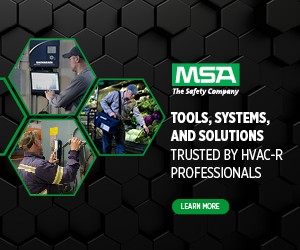Safety Committee Working on Hazardous Energy Lockout Standard for Manual Valves
The project includes a second survey to IIAR members that pays particular attention to actual refrigeration-industry practices on LOTO for manual valves, according to Kem Russell, vice president, engineering, at Doubl-Kold in Yakima, Washington, who is leading the guideline project.
OSHA’s LOTO standard states that it “covers the servicing and maintenance of machines and equipment in which the unexpected energization or startup of the machines or equipment, or release of stored energy, could harm employees. This standard establishes minimum performance requirements for the control of such hazardous energy.”
IIAR has stated the application of this standard usually applies to the isolation and electrical lockout/tagout of a compressor, condenser fan, evaporator, valve or other components. When referring to manually operated hand valves, however, the lines blur. Manual valves cannot open unexpectedly, but could they release stored energy? Should these valves be covered by this standard, and if so, what would be the best practices in doing so?
There are many opinions and viewpoints regarding when manual hand valves should get locked out and/or tagged which IIAR examined in depth in the February issue of the Condenser.
Another challenge is that this standard is not drafted specifically for the refrigeration industry, and as such, its application is open for interpretation.
In the February Condenser, IIAR stated that there is no clear guidance from the industry about how this standard should be applied, and IIAR’s intention is to provide this information. However, in order to provide that guidance, IIAR needed to better understand of what was being practiced in the field.
In December 2018, IIAR released a survey to its members asking for detailed information on how the LOTO standard was applied in their facilities. Two of the major findings were:
- Most companies, regardless of size, do have a LOTO program and feel that the program should apply to all components of their refrigeration systems, including manual hand valves.
- Over 80 percent of respondents indicated that they believe their LOTO program is applied to every manual hand valve in their system, even during routine tasks
This second finding was interesting, and as IIAR stated at the time, might suggest that the respondents were not refrigeration technicians who work on or operate these systems. Field observations indicate that LOTO procedures are not being used as often as respondents seemed to indicate.
It was clear to Russell, who is serving as the chairman of the sub-committee to draft guidance on LOTO, that more information was needed. The group is sending out a second survey, this time to a wider audience, to better understand how LOTO is practiced in the field.
“We’ve generated another survey… there’s just a lot of confusion [surrounding this issue.],” Russell said. “We’re hoping we can get enough responses from the survey to get some direction.” Additionally, he said, IIAR has developed a proposal to have an expert in the matter to draft the guideline once the survey results are in.
The questions asked on the survey seek to probe more deeply into the issue and get a feel for what technicians and operators are actually doing in the field with manual hand valves. “We’re asking if they have a lockout/tagout program, and we’re asking in particular operations if they would lock out particular valves.” For example, if they’re changing a pressure gauge, whether they would have locked out the valve below the gauge.
Russell said the problem is a discrepancy between what’s reported and what is actually happening in the field. The previous survey indicated everyone seems to be locking out everything possible, but on-site observations indicate that is not the case.
“It might be possible that someone does it, but it would be really rare,” Russell said. “There might be occurrences where you could lock out a valve, but where you probably wouldn’t. We’re trying to zero-in on what people are actually doing… we’re trying to clarify it.”
At the time of this writing, the survey is close to being finalized. Russell said he expects to be able to solicit responses through June and have the results in by the end of that month. Then the results will be analyzed and given to the authority selected to draft the guidance. This process is still in flux, but Russell said he hopes the result will be a series of best practices that will increase safety across the industry.
Continuing to allow the LOTO standard for manual values in the refrigeration industry to exist in a grey area is not wise, Russell said. It’s important for IIAR to take leadership in this clarification process.
“A lot of the instances where people get hurt or a release occurs have to do with a valve being opened. What can we do to reduce that potentiality of occurring,” Russell asked. “We don’t want to be so restrictive that you can’t do your work, but our goal is to get to a point where we have better safety procedures in place dealing with manual valves.”















